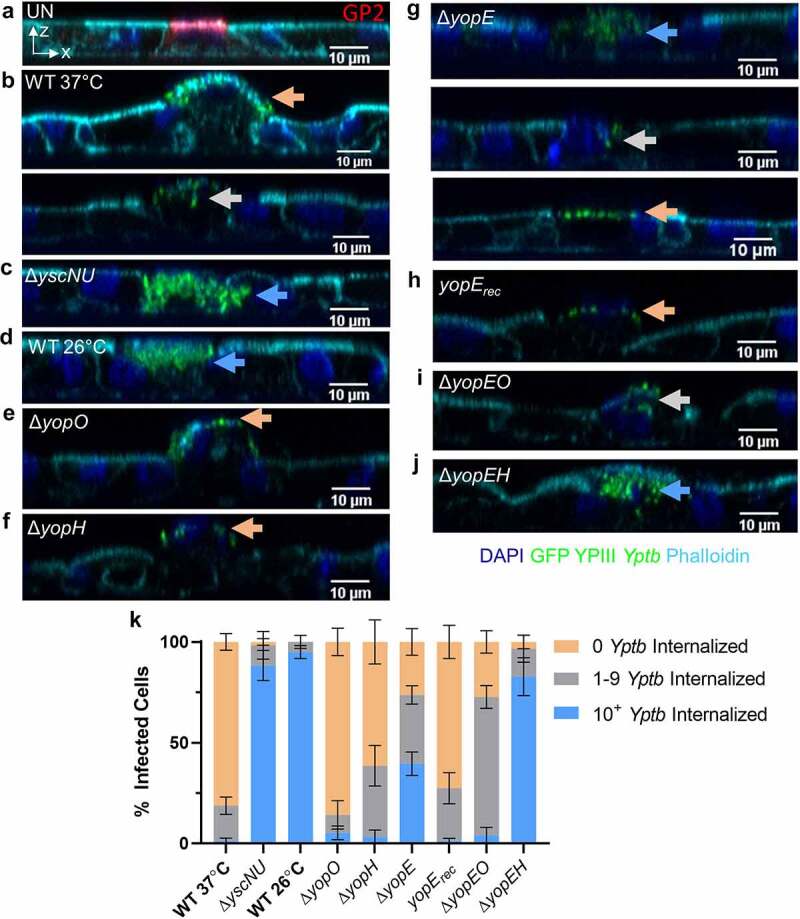Figure 4.

YopE and YopH contribute to inhibition of Yptb internalization by M cells. (a-j) Differentiated HIE25 RT+ ileal monolayers were (a) uninfected or infected for 5 hours with 5 × 106 CFU of (b) WT 37°C, (c) ΔyscNU, (d) WT 26°C, (e) ΔyopO, (f) ΔyopH, (g) ΔyopE, (h) ΔyopE + yopErec, (i) ΔyopEO, and (j) ΔyopEH YPIII Yptb expressing GFP (green). Monolayers were stained with DAPI (nuclei-blue) and phalloidin (F-actin-cyan). (A) was stained with anti-GP2 antibody (M cells-red). Orthogonal XZ planes were analyzed for the presence of Yptb on an M cell surface (0 Yptb internalized-Orange arrows), partially internalized in an M cell (1–9 Yptb internalized-gray arrows), or fully internalized in an M cell (10+ Yptb internalized-blue arrows). (k) Number of Yptb internalized in each M cell was determined and the percentage of cells with the specified number of internalized Yptb per field was plotted. Error bars indicate SEM. Data were pooled from 3+ independent experiments with 2–4 fields analyzed per Transwell and averaged. Statistics were performed using a two-way ANOVA and Tukey’s post hoc multiple comparison tests and are shown in Table S1
